Every garden needs its perennial stalwarts, those uncomplaining, resilient, long-lived ornamental species that shrug off wind, rain, snow and ice, cock a snook at drought, and aren’t one bit put out by downpours and deluges. With that in mind, here’s a handy little shortlist of 12 ultra-resilient, non-invasive, versatile, ornamental perennials – one for each month of the year – that deserve a place in every Irish garden.
January
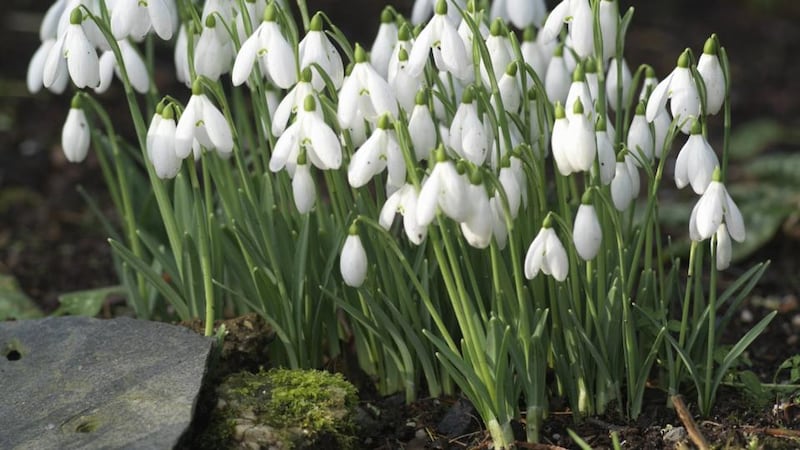
Galanthus/snowdrops: Nothing lifts our winter-weary spirits like the sight of snowdrops in January. Exceptionally hardy (the flowers produce their own natural version of anti-freeze), tough as nails, and tolerant of most soils bar those that are very wet or very dry, these tiny bulbous perennials are the true harbingers of spring. Countless named garden varieties are available, some at eye-watering prices, but our native Galanthus nivalis still holds its own. Snowdrops are best planted ‘in the green’ at this time of the year. For a wide selection of affordable garden-worthy cultivars, visit Robert Miller’s Nursery and Garden, Altamont Plants, in Co Carlow.
February
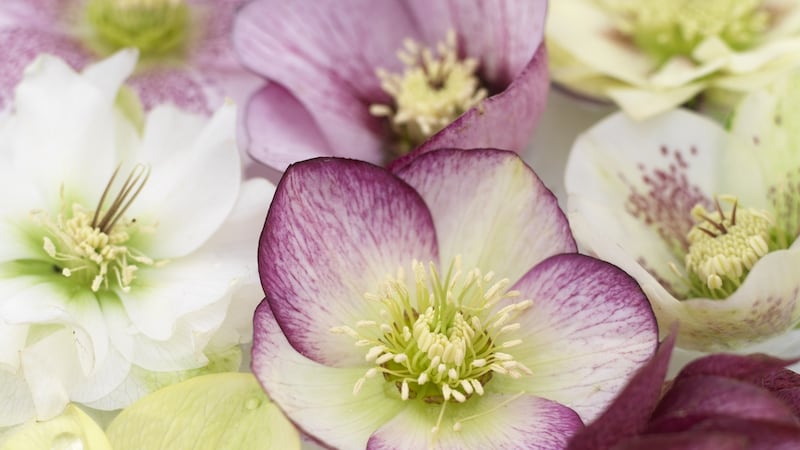
Helleborus x orientalis (Lenten hellebore): Supremely tolerant of neglect, astonishingly long-lived (individual plants can live for many decades), and hugely decorative at a time when its flowers are so very welcome in the spring garden, the Lenten hellebore can be found growing in all the best Irish gardens. Many different named cultivars of this woodland’s edge perennial are available with single and double long-lasting blooms in shades of cream, pink, plum, purple and buttercup yellow, some speckled, others ruffled. Mount Venus Nursery in the foothills of the Dublin mountains always carries an exceptionally good range (mountvenus.com).
March
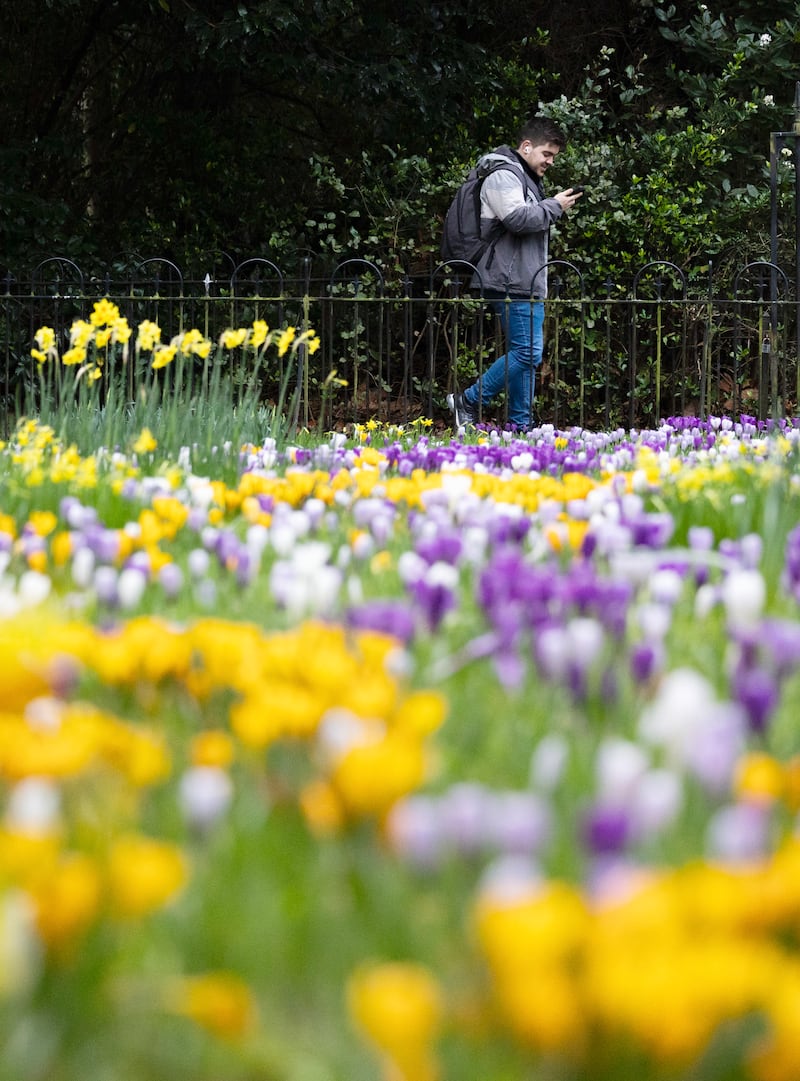
Narcissus/daffodils: Daffodils have exploded into bloom in recent weeks in our gardens and parks as well as along our roadsides to remind us yet again of their impressive resilience and ability to flower their socks off, no matter what. These bulbous perennials are typically planted in autumn as dry bulbs, but can also be planted at this time of year as pot-grown plants. The best varieties? The Narcissus genus is a vast one, filled with garden-worthy cultivars that include everything from the dainty gold-and-orange N. ‘Jetfire’, to the graceful Pheasant’s Eye daffodil (Narcissus poeticus), perfect for naturalising in rough grass. For something extra special, check out the website of Northern Irish specialist nursery Esker Farm Daffodils, which offers stock of many gorgeous Irish-bred varieties (eskerfarmdaffodils.com).
April
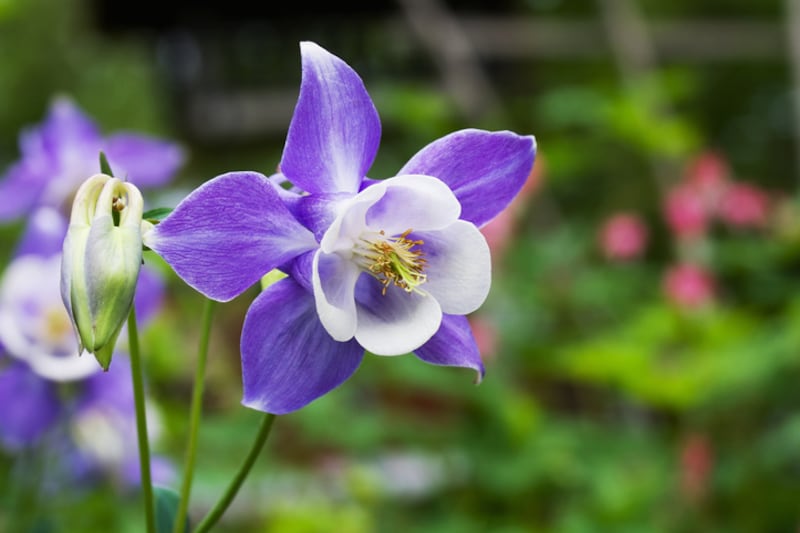
Aquilegia vulgaris/columbine, granny’s bonnets: A cottage garden favourite, this long-lived, slug-resistant, wildlife-friendly, graceful spring-flowering perennial, has withstood the whims of garden fashion both because of its obliging ability to tolerate a very wide range of less-than-ideal growing conditions, as well as the exceptional beauty of its sculptural flowers. The latter emerge on long, very slender stems from low clumps of finely-cut foliage, and come in a myriad of pretty shades of pink, yellow, white, purple and blue, including many that are bi-coloured. Technically a shade-lover, it grows quite happily in full sun, so long as the soil doesn’t ever totally dry out and will often self-seed generously without ever becoming annoyingly invasive. Named varieties often tend to die out but their progeny are every bit as beautiful.
May
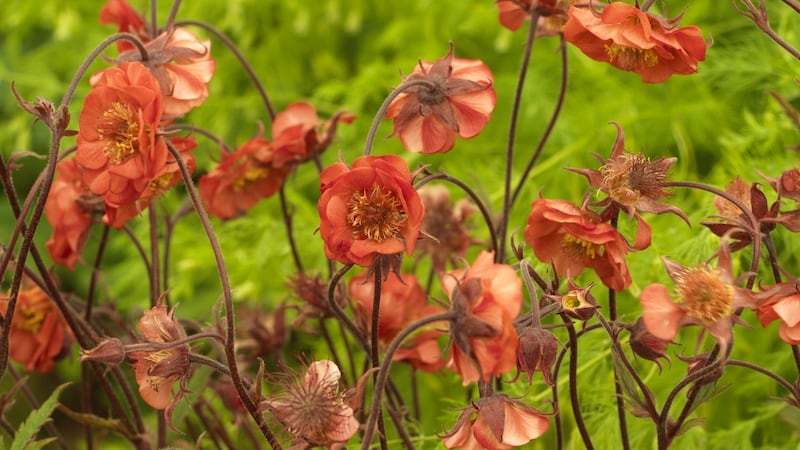
Geum/avens: With so many great varieties of this adaptable, easy-to-grow, long-flowering perennial to choose from, gardeners can take their pick. Traditionalists adore the tall, scarlet-flowered Geum ‘Mrs Bradshaw’ and the yellow-flowered Geum ‘Lady Stratheden’, while a host of new, sterile, ultra-long-flowering varieties have also been introduced in recent years in fruity shades of apricot, orange, rose-peach and soft-gold. My personal favourites include Geum ‘Mai Tai’ (soft apricot); the Tempest series which comes in zingy shades of coral and scarlet; the pastel-coloured Pretticoats series, and the exceptionally long-flowering Geum ‘Totally Tangerine’ (see futureforests.ie).
June
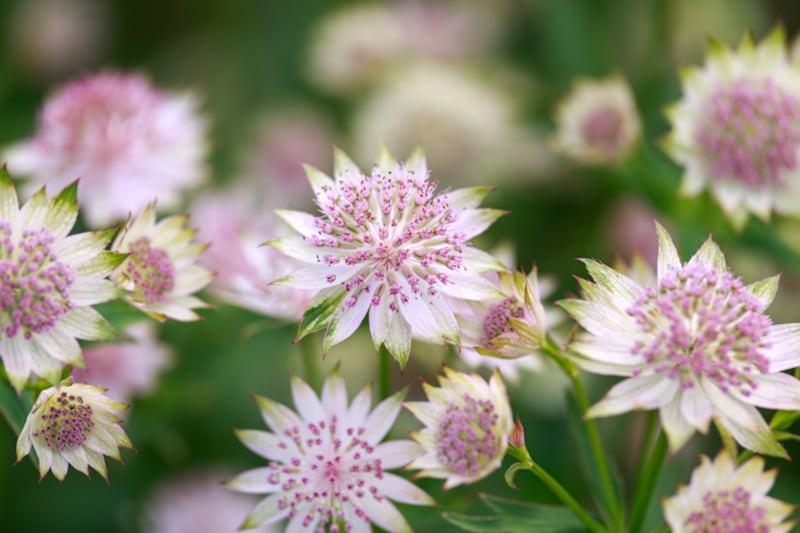
Astrantia/masterwort: Commonly known as masterwort, this ultra-hardy, undemanding, long-lived, versatile perennial has been in cultivation for centuries and is ideally suited to our damp Irish soils. Depending on the variety, its starry pincushion-shaped flowers come in shades of white, pink, purple, burgundy and dark red. Originating in the gardens of RHS Wisley in the UK, A. ‘Ruby Wedding’ is a cracker, producing a multitude of ruby-red flowers on 90cm tall, slim stems from June-August. A. ‘Hadspen Blood’ is similarly dark-coloured and long flowering. (see boynegardencentre.ie)
July
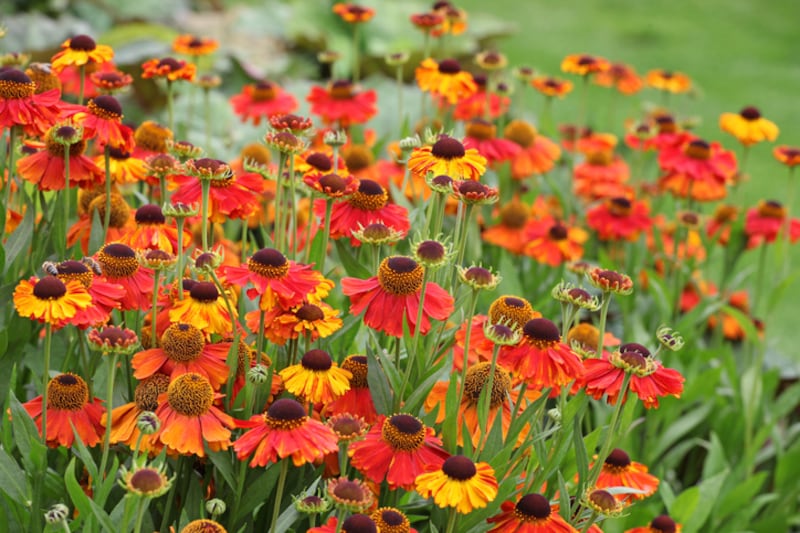
Helenium ‘Sahin’s Early Flowerer’/sneezeweed: Another supremely long-flowering, slug-resistant, garden-worthy perennial, that starts to bloom in June and continues right through into September, its brown-eyed, yellow and rusty-orange daisy flowers appear on long stems and are loved by pollinators. Tolerant of almost every kind of soil including quite sticky clay, it’s also happy in sun or partial shade (see ballyrobertgardens.com).
August
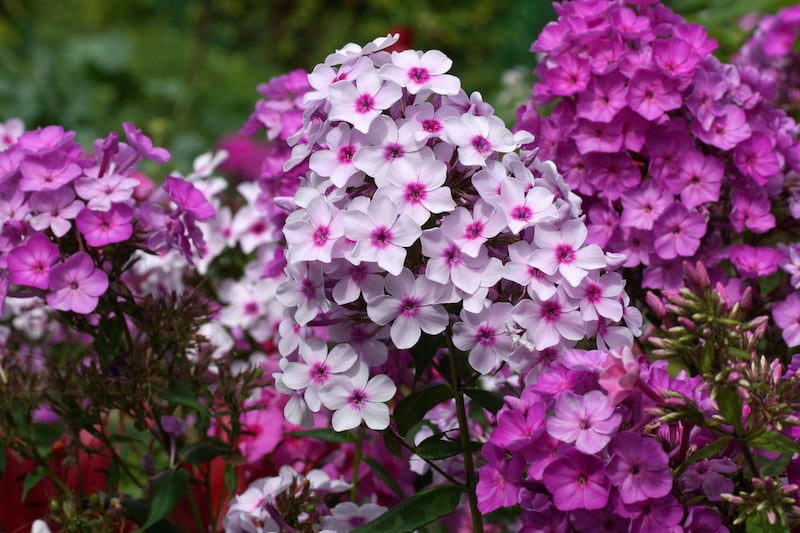
Phlox paniculata/border phlox: Exceptionally long-lived, impressively hardy, and always happy to grow in the cool, damp soils of most Irish gardens, phlox is one of those cottage garden favourites, whose flowers feature in countless romantic watercolours of traditional summer flower borders. But this herbaceous perennial is also very well suited to more contemporary style planting schemes, while its long-lasting, pretty clusters of intensely scented flowers, which appear from July-October on tall stems, are loved by many kinds of pollinators. Happy in sun or light shade, slug-resistant and best in deep, cool, damp, rich soil, it makes a great cut flower with blooms in shades of pink, violet, purple and white, depending on the particular variety (see mountvenusnursery.com).
September
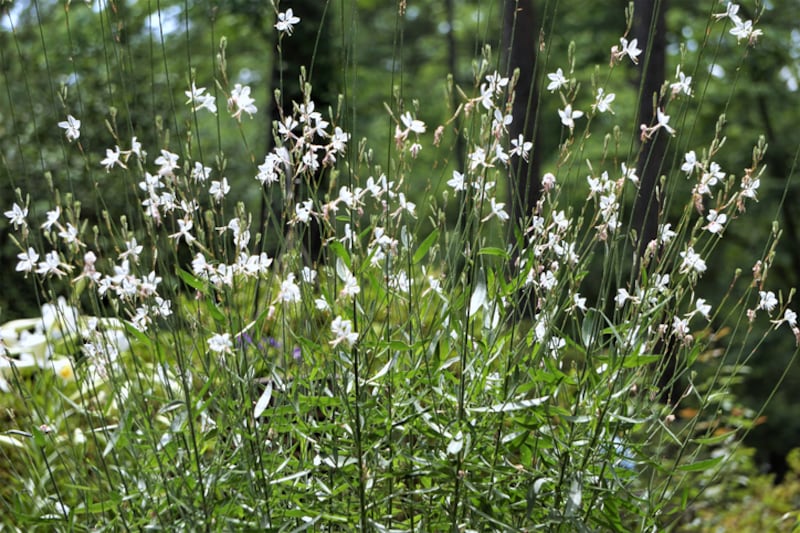
Oenothera lindheimeri ‘Whirling Butterflies’/gaura: I can’t think of many other perennials in my garden that are as long-flowering as Gaura, or as consistently decorative. Easily raised from seed, it quickly forms a tall but airy plant that’s covered in a graceful, cloud of small creamy-pink flowers from May until October, after which its fading foliage provides a final blaze of colour before it dies back down to ground level for winter. Tolerant of poor soils, and as at home in a contemporary gravel garden as it is in a conventional border, the only thing it asks for is a sunny spot.
October
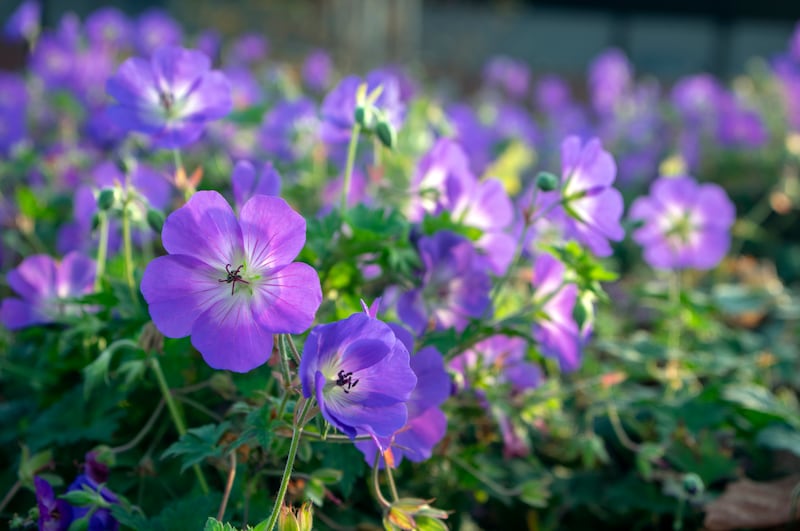
Geranium ‘Rozanne’/perennial geranium: I’ve placed this in the October slot just to underscore quite how long-flowering this exceptional variety of perennial geranium, which blooms from June to October, really is. Winner of the prestigious RHS Plant of the Centenary award and a worldwide best-seller, this fast-growing, clump-forming, hardy herbaceous perennial is one of the superstars of the modern flower garden with white-eyed, violet-blue, saucer-shaped flowers that appear in abundance. Tolerant of most soils and happy in sun and light shade, it’s a great choice for underplanting beneath shrubs and trees (see camolinpottingshed.com).
November
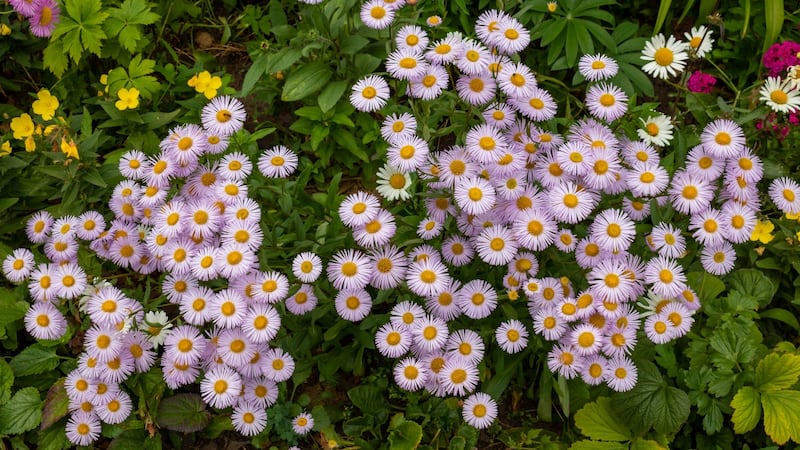
Erigeron karvinskianus/Mexican fleabane: I couldn’t imagine making a garden without including this remarkable little perennial, which slowly forms soft low clouds of interlinking plants that are covered in a fine haze of tiny, pinkish-white daisy-like flowers from May right through to November. Semi-evergreen, happy in sun or shade, impressively drought tolerant and resilient even in exposed coastal conditions, it generously self-seeds itself about but always in a welcome way (see kilmurrynursery.com).
December
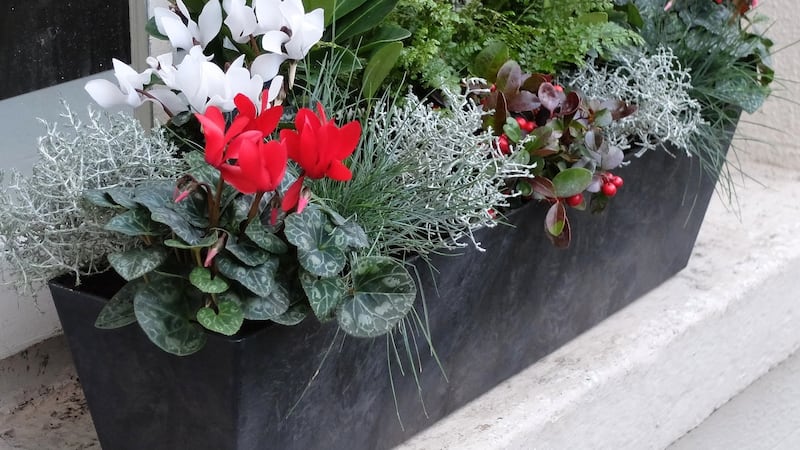
Cyclamen coum/cyclamen: One of the daintiest of bulbous flowering perennials, its candy-pink flowers start to appear in December and continue right through late winter into early spring. True, it needs a humus-rich, free-draining soil in the seasonal shade of deciduous trees and shrubs to thrive, so in that regard it’s fussier than any of the other plants featured on this list. But, given that this hardy little plant dares to bloom in the darkest, coldest months of the year, and does so with such jaunty brilliance, it fully earns its place here (futureforests.ie).
This week in the garden
With no sign of any sustained dry spells in the long-term forecast, and the soil in many gardens still exceptionally wet and cold, it’s a good idea to temporarily cover empty seedbeds and/or empty vegetable beds with some sheets of strong black plastic to help boost soil temperatures, suppress weed germination and protect them from further heavy rain. Weigh it down with some heavy stones, or trench the edges at least 10cm in the ground, to secure it.
Keep a watchful eye out in the coming weeks for harsh spring frosts, that could damage the emerging blossom on fruit trees and prevent them from successfully fruiting this year. When hard night frosts are forecast, try to cover the blossom with a protective layer of garden fleece or some old sheets, making sure to remove these the following morning to allow pollinating insects to access the flowers.
Dates for your diary
Tomorrow, Sunday, March 24th (11am-4pm), RHSI Bellefield Gardens, Shinrone, Co Offaly, RHSI Plant Fair 2024, with tours of the garden by head gardener Paul Smyth at 12pm and 2pm, see rhsi.ie
Also Sunday, March 24th (9.30am-1pm), The Grinding House, June Blake’s Garden, Tinode, Blessington, Co Wicklow, ‘Learn how to grow your own cut flowers for free from seed, cuttings and division’, a hands-on plant propagation half-day workshop with Fionnuala Fallon, see eventbrite.com/o/fionnuala-fallon-74563213293 or @theirishflowerfarmer for booking details
Easter Sunday, March 31st -Easter Monday, April 1st (10am-5pm), the first ISNA Plant Fair of 2024 will take place at Farmleigh House, Phoenix Park, Dublin 1, see farmleigh.ie and irishspecialistnurseriesassociation.com
Saturday April 20th-Sunday April 21st, Festival of Gardens and Nature, Ballintubbert House & Gardens, Stradbally, Co Laois, with a line-up that includes a host of international expert speakers covering a diverse range of topics from kitchen gardening, scented gardens, soil health and sustainable floristry to revitalising historic gardens, supporting garden biodiversity and rewilding. See festivalofgardensandnature.com for booking details.
- Listen to our Inside Politics Podcast for the latest analysis and chat
- Sign up for push alerts and have the best news, analysis and comment delivered directly to your phone
- Find The Irish Times on WhatsApp and stay up to date











